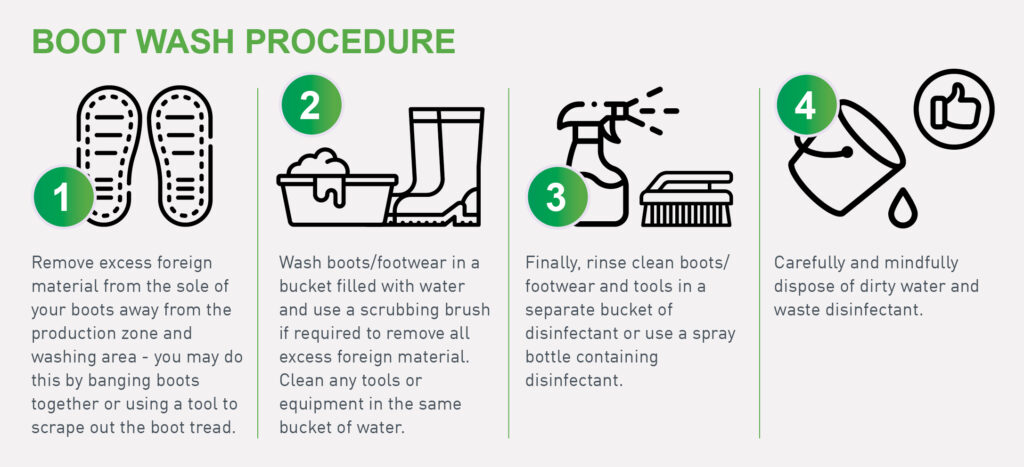Read the latest information on
Foot-and-mouth disease
As you’ll know from the Animal Health Australia Animal Disease Alerts, travellers arriving in Australia from Indonesia are required to use foot mats upon arrival. These mats help to sanitise the footwear of passengers using a three per cent citric acid solution. There are also strengthened requirements for footbath use on livestock vessels while docked at Australian ports.
While foot-and-mouth disease (FMD) has not been detected in Australia, and the Australian government is doing all it can to ensure it stays that way through strong biosecurity measures at the border, having a footbath on-farm provides your property and our broader industry with an added layer of protection against the devastation of disease outbreak.
Even during peacetime, there is a huge benefit in having a footbath or cleaning area set aside for cleaning boots (and equipment) for all sorts of pathogens and weed prevention. In times of heightened threat, this can also help to prevent exotic diseases like FMD entering the property in the unlikely event of an emergency animal disease (EAD) outbreak.
How do I make and maintain a footbath on-farm?

There are three simple rules when allowing visitors and workers to wear their own footwear in your production areas:
Cleaning step
Before washing, use a strong bristled brush to remove all visible debris. Boots should be free of dirt, mud, manure, and plant material before using the footbath. These kinds of organic matter quickly contaminate the water and prevent the disinfectant from killing germs, so the boots need to be generally clean before you wash and disinfect.
Washing step
The footbath should be a container which allows easy access. Ensure the container can fit a large boot so that the liquid saturates all parts of the footwear. Adding some soap or detergent to the water can clean better than using water alone. If shoes were very dirty to begin with, use the scrubbing brush while standing in the soap solution to thoroughly clean the soles of the shoe.
Disinfection step
For maximum cleaning a disinfection step should follow the washing step.
A second footbath should contain disinfecting products. These must be refreshed regularly as build-up of dirt and rainwater in these solutions will lessen their effectiveness.
You can use bleach diluted to one per cent active sodium hypochlorite (the active ingredient in bleach). For example, dilute a bleach solution which is four per cent active sodium hypochlorite using three parts water to one part bleach.
Any other farm disinfectants can also be used as per their label instructions.
As leather or fabric shoes can be damaged by prolonged exposure to disinfectants, a final rinse with fresh water is advised for them.
For more detailed information about products and setup see the resources here and here.